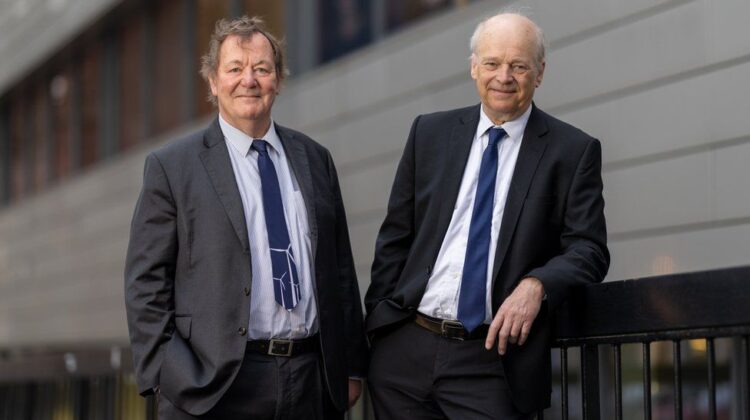
The 2024 Queen Elizabeth Prize for Engineering has been awarded to Denmark’s Henrik Stiesdal and Britain’s Andrew Garrad CBE for their achievements in advancing the design, manufacture and deployment of high-performance wind turbines – developments that have enabled wind energy to make a material contribution to global electricity generation and deliver transformational impact in diversifying the global energy mix.
Awarded annually, the QEPrize is presented to engineers responsible for groundbreaking innovations that have been of global benefit to humanity. Now in its second decade as the leading international accolade for engineering achievement, the 2024 QEPrize Laureates were announced by Lord Browne of Madingley, chairman of the Queen Elizabeth Prize for Engineering Foundation, during a reception at the Science Museum in the presence of HRH The Princess Royal, Royal Fellow of the Royal Academy of Engineering.
Over the past four decades, Stiesdal (pictured above, at right) and Garrard (pictured above, at left) have made seminal engineering inputs that – from demonstration to full-scale implementation – have resulted in a phenomenal increase in the size of individual wind turbines and the scale of the wind farms in which they’re sited, as well as in their engineering and economic performance. Credited for the early technology and critical advances as the industry has evolved, the 2024 laureates have each pioneered a system that’s present in almost all modern wind turbines operating both onshore and offshore in the market today.
Stiesdal is credited for a three-blade turbine, initially designed in 1978, that represents what’s sometimes described as the Danish concept. Leading notable developments in proprietary blade manufacturing technology throughout the 1990s, Stiesdal’s elegant innovation, which operates upwind of the tower and allows twisting of the blades about their own axis (pitch control), has significantly enhanced the scale and efficiency of modern turbines. Further developments pioneered by Stiesdal include wind turbine blades cast in one piece and direct-drive generators for offshore wind turbines, eliminating the need for gearboxes.
The BLADED computational design tool pioneered by Garrad allows engineers to model a complicated turbine system in its entirety and to predict its behaviour with the confidence needed to permit manufacture of these huge machines. It has been used all over the world and through the consultancy company he co-founded – which has supported the industry through design, testing, measurements, energy evaluation and technical due diligence – has allowed the rapid expansion of the global manufacturing base. A similar analytical approach to wind farm yield pioneered widespread project financing by providing rigorous risk assessments of potential wind farm investment.
‘It is an honour to receive the Queen Elizabeth Prize for Engineering alongside Andrew,’ Stiesdal said. ‘To me, it represents much more than personal recognition; it is a tribute to the collective efforts of pioneers and engineers in wind power. Since the late 1970s, they embodied the essence of this prize, creating bold, groundbreaking innovations delivering sustainable and competitive energy, addressing climate change and providing global benefits for humanity. I am very happy to have had the opportunity to contribute to this development, and I look forward with eagerness to the future growth of wind power, driven by the dedication of new generations of engineers.’
‘Wind energy has been with us for millennia, but in the last 50 years, it entered a new era,’ Garrad said. ‘The ten-metre-diameter turbines of my early professional life have become the 250-metre giants of today – simply amazing! What could possibly be more exciting for an engineer? I count myself as extraordinarily lucky to have been part of that transition. To be awarded the Queen Elizabeth Prize for Engineering is a wonderful bonus to an already fascinating career. I am personally, immensely proud, but Henrik and I see ourselves as representatives of a much bigger group of people who have made wind energy an essential part of our zero-carbon future and we have, all of us together, earned this prize.’
‘This year’s winning innovation truly captures what the Queen Elizabeth Prize for Engineering represents,’ said Professor Dame Lynn Gladden, chair of the judges. ‘Over the past four decades, Henrik Stiesdal and Andrew Garrad have advanced the design, manufacturing and deployment of wind turbines, enabling wind energy to fulfil a crucial role in today’s electricity generation mix. Their impact on the energy landscape showcases a commitment that resonates with the core values of engineering excellence, to problem-solve for a better society.’


